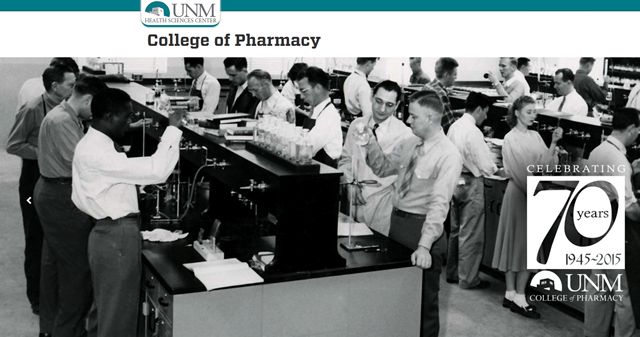
Pharmaceutical Sciences ETDs
Publication Date
Summer 7-1-2017
Abstract
Objective: Both spontaneous (voluntary) reporting systems and observational approaches serve as important tools in post-marketing surveillance for adverse drug events, however, each has its own advantages. The primary purpose of this project was to compare and contrast the FDA Adverse Event Reporting System (FAERS) data and findings from observational studies in post-marketing surveillance through examining TNF inhibitors (etanercept, adalimumab, infliximab, certolizumab and golimumab) related infections, and secondarily, to examine the applicability of additional analyses in FAERS, such as multiple logistic regressions and time to onset of event analysis.
Methods: Using MedDRA® preferred terms (PTs), infection and infestation cases in FAERS with each TNF inhibitor as the primary suspect drug were extracted through EvidexTM. PubMed was searched for post-marketing observational studies that reported data on infections related to any of the studied TNF inhibitors. Completed observational studies with results reported on ClinicalTrials.gov (OS-CTs) were also extracted. Exclusion criteria for observational studies were: 1) did not assess safety, 2) contained duplicate data from another observational study and 3) reported only pre-specified adverse events. For each infection PT, the percentage of the total number of infections from each source was determined. We contrasted FAERS and observational studies in post-marketing surveillance for TNF inhibitor related infections on duplicates and timeliness, and examined the level of incompleteness and inaccuracy in FAERS data. We then compared the number and level of specificity of identified infections between 3 data sources. We also assessed the consistency in most commonly reported infections through generated rankings from each data source for each TNF inhibitor. Multiple logistic regressions were performed to determine significant predictors of having a more severe event outcome. Kaplan-Meier curves were generated to examine the difference in time to onset of event among different TNF inhibitors.
Results: In FAERS, 163,789 cases were found for all 5 TNF inhibitors with etanercept having the greatest number of cases (n=68,807, 42.0%) and adalimumab having the greatest number of reported PTs (n=824). A total of 53 observational studies from our PubMed search and 52 observational studies from ClinicalTrials.gov were included in our final data synthesis. FAERS rendered the greatest number and level of specificity of reported TNF inhibitor related infections, followed by ClinicalTrials.gov.
For adalimumab, 4 of 10 infection terms matched between all three data sources (sinusitis, pneumonia, upper respiratory tract infection, and herpes zoster), among which none was reported at rates within 1% of each other. Seven of the top 10 infection terms matched between evidence from FAERS and ClinicalTrials.gov. For etanercept, 4 of 10 infection terms matched between all three data sources (nasopharyngitis, pneumonia, upper respiratory tract infection, and herpes zoster), among which herpes zoster was reported at rates within 1% of each other. Seven of the top 10 infection terms matched between evidence from FAERS and ClinicalTrials.gov. For infliximab, 2 of 10 infection terms matched between all three data sources (pneumonia and urinary tract infection), among which none was reported at rates within 1% of each other. Six of the top 10 infection terms matched between evidence from FAERS and ClinicalTrials.gov. For, certolizumab pegol, 1 of the top 5 infection terms matched all three data sources (urinary tract infection). Three of the top 5 infection terms matched between evidence from FAERS and ClinicalTrials.gov. For golimumab, two of the top 5 infection terms matched between evidence from FAERS and ClinicalTrials.gov
Our results from multiple logistic regressions showed that certolizumab pegol, golimumab, younger ager, being female and less weight were associated with less severe event outcomes (p-values
Conclusion: Our analyses demonstrated the beneficial attribute of FAERS to provide specific infection terms regarding the amount and specific level of terms. Our analyses also showed the usefulness of ClinicalTrials.gov, as one of the data source of observational studies, of offering more detailed information on adverse events compared to studies identified in the literature. Results indicate that passive (FAERS) and active (observational studies) pharmacovigilance provide similar results for common infections associated with TNF inhibitors. This finding supports the usefulness of FAERS in post-marketing drug safety assessment.
First Committee Member (Chair)
Dennis W. Raisch, PhD, MS, RPh
Degree Name
Pharmaceutical Sciences
Second Committee Member
Matthew E. Borrego, PhD, MS, RPh
Level of Degree
Masters
Third Committee Member
Melissa H. Roberts, PhD, MS
Department Name
College of Pharmacy
Language
English
Document Type
Thesis
Keywords
Tumor necrosis factor (TNF) inhibitor, adverse event, infection, FDA Adverse Event Reporting System, FAERS
Recommended Citation
Chen, Cheng. "COMPARISON OF POST-MARKETING SURVEILLANCE APPROACHES REGARDING INFECTIONS RELATED TO TUMOR NECROSIS FACTOR (TNF) INHIBITORS." (2017). https://digitalrepository.unm.edu/phrm_etds/17
